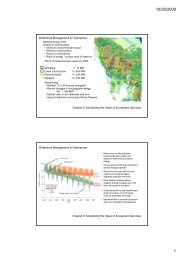RAINFOR GEM Intensive Plots Manual (pdf) - University of Oxford
RAINFOR GEM Intensive Plots Manual (pdf) - University of Oxford
RAINFOR GEM Intensive Plots Manual (pdf) - University of Oxford
- No tags were found...
Create successful ePaper yourself
Turn your PDF publications into a flip-book with our unique Google optimized e-Paper software.
appropriate equipment. We recommend Campbell Scientific Automatic Weather Stations(http://www.campbellsci.co.uk/index.cfm?id=105: see TEAM 2011 for recommendations for all components),although other devices such as Skye MiniMET stations(http://www.skyeinstruments.com/category/products/minimet-weather-station/) are in use across the network.Measurements in the clearingIn the absence <strong>of</strong> a tower, the primary MET station should be set up in a clearing as close as possible to thecensus plot. As emphasised in TEAM (2011), the clearing should be no smaller than 70 m 2 and whereverpossible located away from sloping ground, hollows or valleys, permanently-shaded areas, swamps and lowplaces that hold water after rain (however note the sloping ground around the MET station pictured above:these are guidelines and it is frequently not possible to avoid sloping ground). The implicit assumption in allmeteorological measurements is that sensors are positioned at a height which is representative <strong>of</strong> a homogenousland cover below. Therefore, meteorological measurements are made using sensors mounted on a tower <strong>of</strong>sufficient height to make representative measurements <strong>of</strong> the land cover below.For areas <strong>of</strong> short grass/bare ground, position the MET station following the ‘level 2’ siting guidelines <strong>of</strong>TEAM (2011), i.e. following the 4H and 2H rules illustrated in the figure above (from TEAM 2011). Thescreen height <strong>of</strong> the MET station should be set at 2 m above the ground (WMO 2008) which gives anacceptable footprint for upwelling radiation measurements (with a sensor height <strong>of</strong> 2 m, 90% <strong>of</strong> the fluxoriginates from a circle <strong>of</strong> diameter 12 m on the surface). Apart from the precipitation gauge, all equipmentshould be mounted as close as possible 98 to screen (reference) height on the station tower.98 n.b. “close” is a relative term here: within a metre or so is fine for above-canopy measurement, e.g. photo above, although forbelow-canopy work they should be somewhat closer, e.g. photo below. Also, note that in TEAM (2011) the temperature and humiditysensors are at 2 m height but the radiation sensor is at 3 m.76





